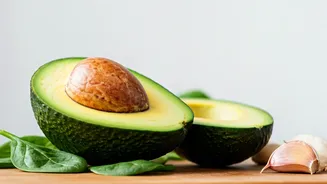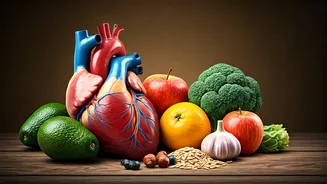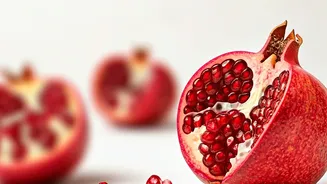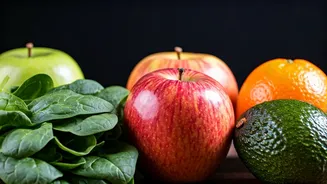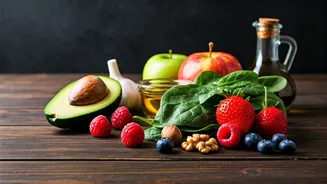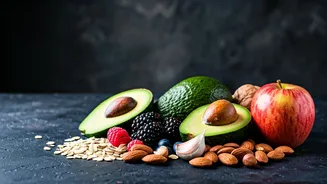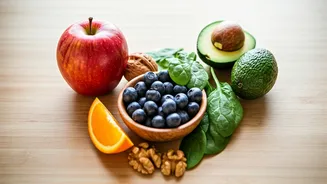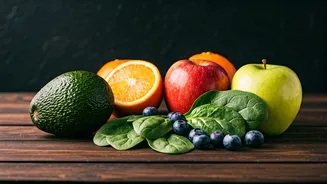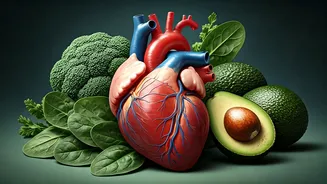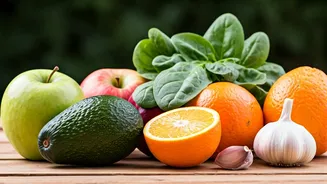Fiber-Rich Foods
Fiber, particularly soluble fiber, is a key player in cholesterol management. Soluble fiber binds with cholesterol in the digestive system, preventing
its absorption into the bloodstream. Great sources include oats, barley, and fruits like apples, pears, and citrus fruits. Aim for at least 5-10 grams of soluble fiber daily to help lower LDL (bad) cholesterol. Oats can be a fantastic way to kickstart your day. Consider adding some berries to your oatmeal for extra antioxidants. Barley can be incorporated into soups or salads. Fruits make great snacks and are also high in fiber, aiding in overall digestive health and cholesterol management. Remember that a gradual increase in fiber intake is ideal to avoid any digestive discomfort, and drinking plenty of water will help things move smoothly. Fiber-rich foods often provide other health benefits too, such as helping you feel fuller, which is beneficial for weight management.
Healthy Fats Choices
Switching from saturated and trans fats to unsaturated fats is a pivotal move for improving cholesterol levels. Monounsaturated fats, found in olive oil, avocados, and nuts like almonds and cashews, can help lower LDL cholesterol while raising HDL (good) cholesterol. Polyunsaturated fats, like omega-3 fatty acids found in fatty fish (salmon, mackerel, and sardines) and some vegetable oils, also provide significant benefits. When cooking, opt for olive oil instead of butter or coconut oil, which are high in saturated fats. Enjoy a handful of nuts as a snack in place of processed snacks. Incorporate fatty fish into your diet at least twice a week. These adjustments are a great way to improve your heart health. Be mindful of portion sizes with nuts and oils. Although these fats are beneficial, they still contribute calories, so moderation is key. A balanced approach that incorporates these healthy fats will support your cholesterol levels in the long run.
Plant Stanols/Sterols
Plant stanols and sterols are naturally occurring substances found in plants that can help block the absorption of cholesterol in the small intestine. They are often added to foods like margarine, yogurt, and orange juice. Consuming 2 grams of plant stanols or sterols per day can help lower LDL cholesterol by up to 10%. To get this amount, you may need to rely on fortified foods, since naturally occurring levels are relatively low. Always read food labels to check the amount of plant stanols or sterols in a product. They are particularly effective when combined with other cholesterol-lowering strategies, such as a heart-healthy diet and regular exercise. Adding these to your diet is usually safe. Remember to consult a healthcare professional before making significant dietary changes, especially if you're taking any medications or have pre-existing health conditions.
Soy Products and Cholesterol
Soy products, such as tofu, soy milk, and edamame, are a great option for cholesterol management and have been associated with lower LDL cholesterol levels. Soy contains protein, fiber, and isoflavones, all contributing to its heart-healthy properties. Incorporating soy into your diet provides a good source of protein while reducing saturated fat intake, if you’re substituting it for meat. Tofu can be used in a variety of dishes, from stir-fries to smoothies. Soy milk is a dairy-free alternative that can be enjoyed in your cereal or coffee. Edamame makes a nutritious snack. Some studies suggest consuming approximately 25 grams of soy protein per day can contribute to lower cholesterol levels. Although the effects are usually modest, soy products are a great part of a heart-healthy diet. When buying soy products, look for options without added sugars or excessive sodium. These foods can be included as part of your overall balanced diet.
Other Beneficial Foods
Besides the food groups mentioned above, other items can have a positive impact on your cholesterol levels. These include garlic, which may help lower cholesterol and blood pressure; dark chocolate (in moderation), which provides antioxidants and may increase HDL cholesterol; and red wine (again, in moderation), which can provide similar benefits to dark chocolate. When including these in your diet, consider how they fit into your overall dietary pattern. Garlic can be added to many savory dishes for flavor. Choose dark chocolate with a high cocoa content and limit your intake to a small square or two. If you drink alcohol, do so in moderation, which for women is up to one drink per day, and for men is up to two drinks per day. A balanced, varied diet that includes these foods can help support your heart health.


